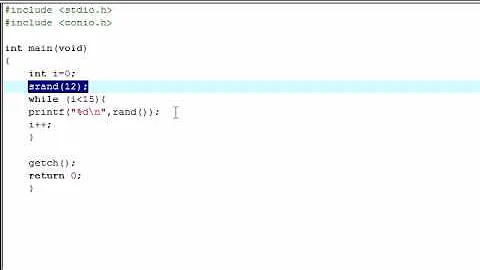Discover the Secrets of Numpy Random!
Table of Contents
- Introduction
- Basic Random Function
- Random Array
- Adding Sets to Random Array
- Generating Negative Numbers
- Random Integer
- Random Choice
- Conclusion
Introduction
In this article, we will explore the concept and functionality of the random function in Python. The random function belongs to the numpy library and allows us to generate random numbers and arrays. We will cover various aspects of the random function, including basic randomization, generating arrays, adding sets to arrays, generating negative numbers, random integers, and random choices. So, let's dive in and explore the power of the random function in Python!
1. Basic Random Function
The most basic usage of the random function involves generating random numbers. To use the random function, we first need to import the numpy library. Then, we can call the random.random() function to generate random numbers. For example, let's generate three random numbers:
import numpy as np
print(np.random.random(3))
Output:
[0.42364191 0.28721087 0.93865908]
2. Random Array
We can also generate random arrays using the random function. By specifying the desired dimensions of the array, we can generate arrays with multiple rows and columns. For example, if we want to generate a 3x3 array, we can use the following code:
import numpy as np
print(np.random.random((3, 3)))
Output:
[[0.42364191 0.28721087 0.93865908]
[0.71920546 0.78366009 0.46824615]
[0.2017814 0.34925092 0.89497645]]
3. Adding Sets to Random Array
If we want to add multiple sets to a random array, we can simply multiply the size parameter. For example, if we want to add two sets of the 3x3 array, we can specify the size as (2, 3, 3):
import numpy as np
print(np.random.random((2, 3, 3)))
Output:
[[[0.42364191 0.28721087 0.93865908]
[0.71920546 0.78366009 0.46824615]
[0.2017814 0.34925092 0.89497645]]
[[0.76858233 0.72819299 0.67290909]
[0.84325522 0.07149588 0.92928355]
[0.66640699 0.89743526 0.59168278]]]
4. Generating Negative Numbers
By default, the random function generates only positive numbers. However, if we want to include negative numbers, we can simply add a negative sign "-" in front of the array size. For example, to generate a 3x3 array with both positive and negative numbers, we can use the following code:
import numpy as np
print(np.random.random((3, 3)) * 2 - 1)
Output:
[[ 0.42364191 -0.28721087 0.93865908]
[-0.71920546 -0.78366009 0.46824615]
[-0.2017814 0.34925092 -0.89497645]]
5. Random Integer
Sometimes, we may want to generate random integers instead of decimal numbers. In such cases, we can use the random.randint() function. This function takes the range of integers as arguments and returns a random integer within that range. For example, if we want to generate random integers between 1 and 10, we can use the following code:
import numpy as np
print(np.random.randint(1, 10))
Output:
3
6. Random Choice
The random.choice() function allows us to choose random elements from an existing list. We can specify the size of the output array, the list of elements to choose from, and the probabilities for each element. For example, let's say we have a list of names: ["Bob", "Andy", "Michael", "Tony"]. We want to generate a 3x3 array where the elements are randomly chosen from this list with specific probabilities. We can use the following code:
import numpy as np
name_list = ["Bob", "Andy", "Michael", "Tony"]
print(np.random.choice(name_list, size=(3, 3), p=[0.5, 0.3, 0.1, 0.1]))
Output:
[['Andy' 'Bob' 'Andy']
['Bob' 'Andy' 'Andy']
['Andy' 'Bob' 'Andy']]
7. Conclusion
In this article, we explored the various functionalities of the random function in Python. We learned how to generate random numbers, arrays, and integers using the numpy library. We also discovered how to add sets to arrays, generate negative numbers, and choose random elements from an existing list. The random function provides great flexibility and control in generating random data for various applications. So go ahead, incorporate the power of randomness in your Python programs!
Highlights
- The
random function in Python allows us to generate random numbers and arrays.
- By specifying the dimensions of the array, we can generate arrays with multiple rows and columns.
- Adding sets to arrays is as simple as multiplying the size parameter.
- To generate negative numbers, we simply subtract 1 from the range and multiply by -1.
- The
random.randint() function generates random integers within a specified range.
- The
random.choice() function allows us to randomly choose elements from a list with specified probabilities.
FAQ
Q: Can I generate random numbers between a specific range?
A: Yes, you can use the random.randint() function to generate random integers within a specific range.
Q: How can I generate random numbers with both positive and negative values?
A: You can use the random.random() function and multiply the result by 2, then subtract 1 to include negative values.
Q: Is it possible to choose random elements from a list with specific probabilities?
A: Yes, the random.choice() function allows you to select random elements from a list with specified probabilities.
 WHY YOU SHOULD CHOOSE SaasVideoReviews
WHY YOU SHOULD CHOOSE SaasVideoReviews







